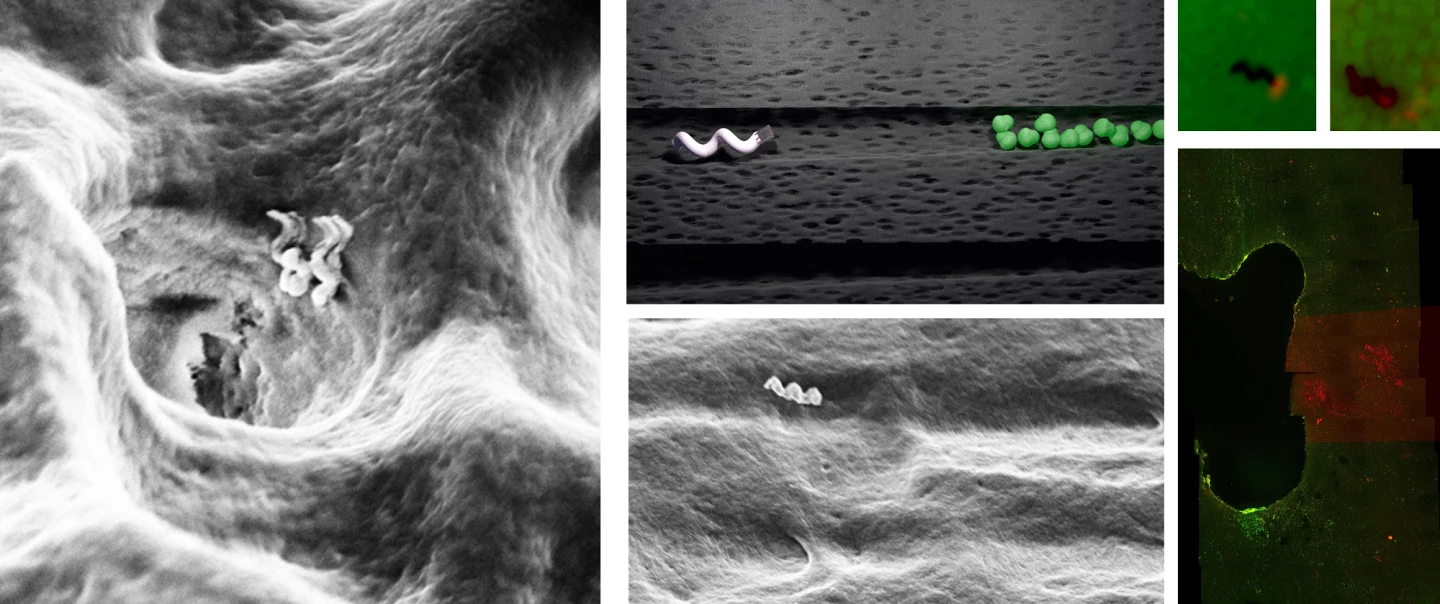The accumulation of bacteria in the depths of our teeth can lead to infection in inaccessible areas. Scientists at the Indian Institute of science have developed a set of tiny cleaning robots, which they think can do the job** These nano-sized machines can guide the magnetic field into the micro channels of teeth and kill bacteria with heat, which provides a safe and effective method to improve the success rate of standard root canal therapy.
These robots were created by the team's pursuit of new and improved methods to solve the bacteria existing in dentin tubules. These tiny channels start from the pulp inside the tooth and extend outward, stopping just near the enamel outside. Bacteria that accumulate in these channels can cause infection and require root canal treatment, but some bacteria can avoid this treatment.

Team member shanmukh Srinivas explained: "the dentinal tubules are very small and the bacteria are deep in the tissue. The current technology is not efficient enough to fully enter the interior and kill the bacteria."
Root canal therapy involves rinsing teeth with chemicals that kill bacteria, but antibiotic resistant species can resist attack, while other bacteria may completely escape their "claws". In their early work, scientists used lasers and ultrasound to pressurize these treatments and generate shock waves in the liquid to better wash away bacteria, with some success. These methods have their limitations and can only penetrate about 800 microns of teeth.
Scientists have now taken a significantly different route, using the world of micro robots to propose a deeper cleaning solution. The team's micro robots are spiral shaped and made of silicon dioxide with an iron coating. This allows them to be controlled by a magnetic field and taken to a depth of up to 2000 microns, where the magnetic field can be adjusted to enable the robot to generate heat and kill bacteria.
This was demonstrated by injecting robots into extracted tooth samples, and scientists successfully moved them into dentin tubules to remove bacteria. Importantly, their research also shows that once the work is completed, they can take back the robots and extract them from tooth samples.
Team member debayan Dasgupta said: "there is no other technology on the market that can do this."
This method is similar to other cancer treatments being developed. We have seen many examples of magnetic nanoparticles that can penetrate into cancer cells and be heated to destroy them. An interesting example earlier this year involved magnetic "seeds" aimed at removing tumors that are difficult to treat. We have seen this type of thinking applied to dental hygiene before. A research team demonstrated a micro robot in 2019, which aims to break the bacterial biofilm covering our teeth.
After testing the mouse model and proving it safe and effective, the authors of the new study hope to commercialize the technology through a spin off company called theranautilus. They are also working on a special medical device that dentists can deploy and control these robots in the mouth during root canal therapy.
"We are very close to deploying this technology in a clinical environment, and even three years ago, it was considered the future. It's a joy to see how a simple scientific curiosity can form a medical intervention that can affect millions of people in India alone," said ambarish Ghosh, co-founder of theranautilus
The study was published in advanced healthcare materials 》In the magazine.